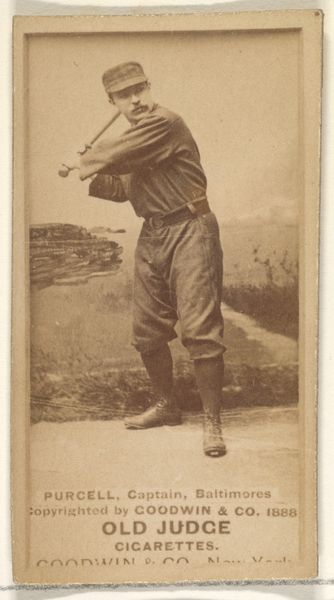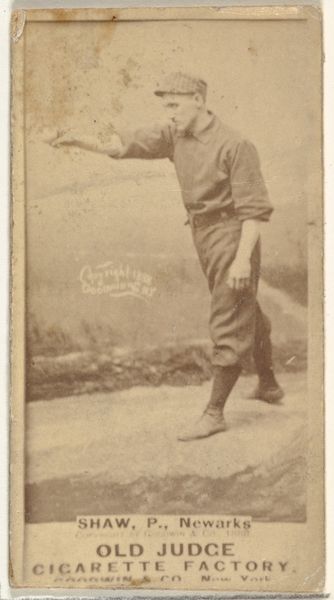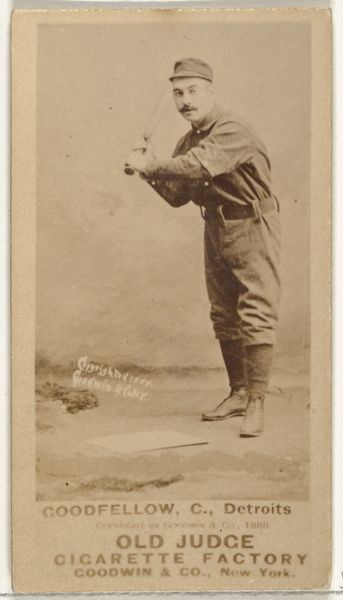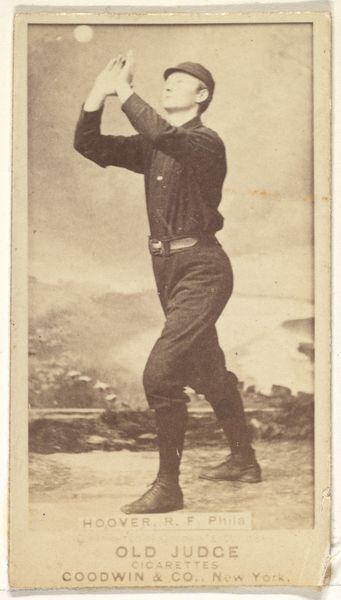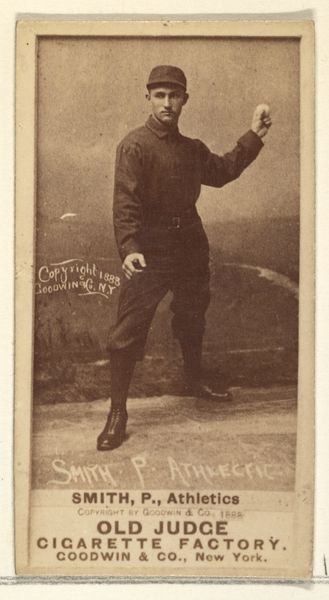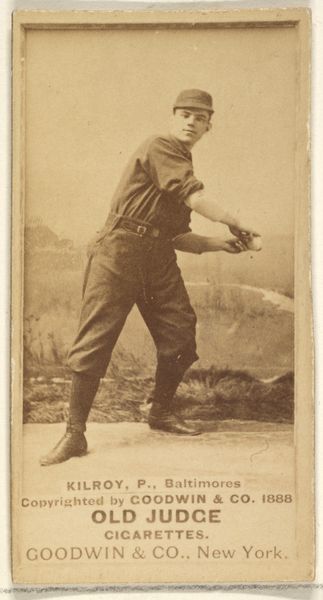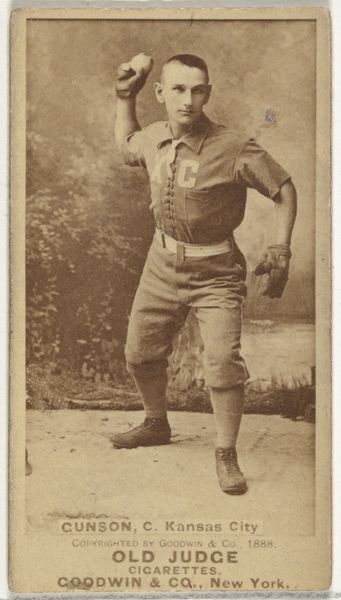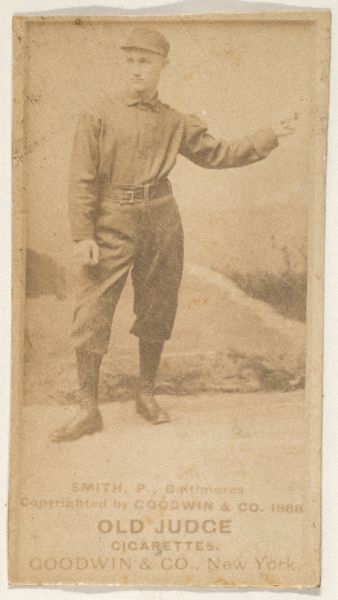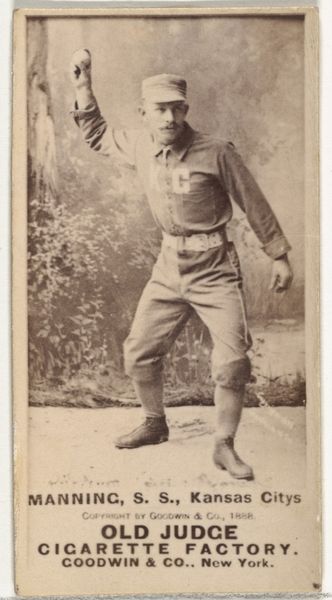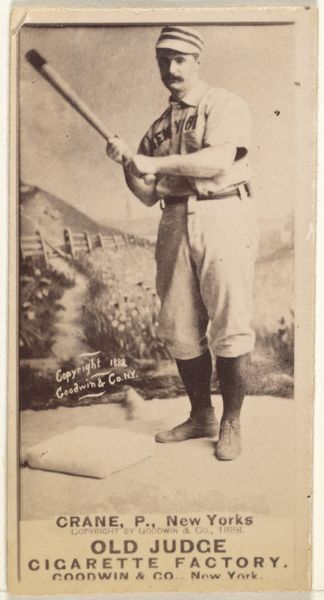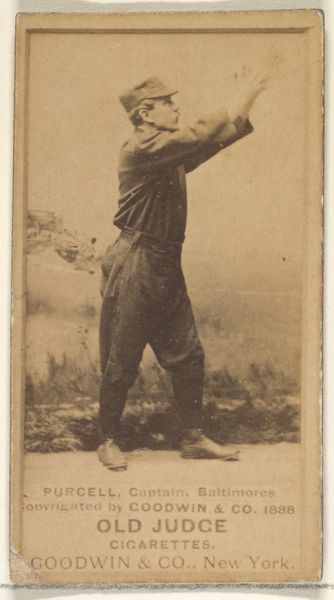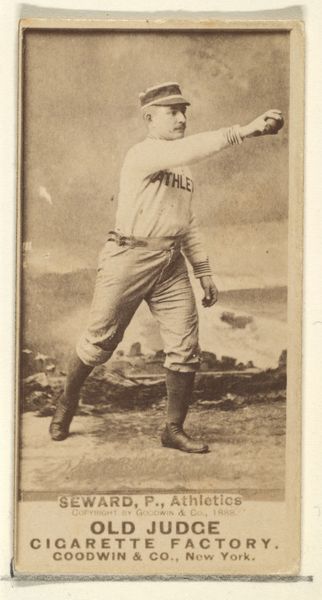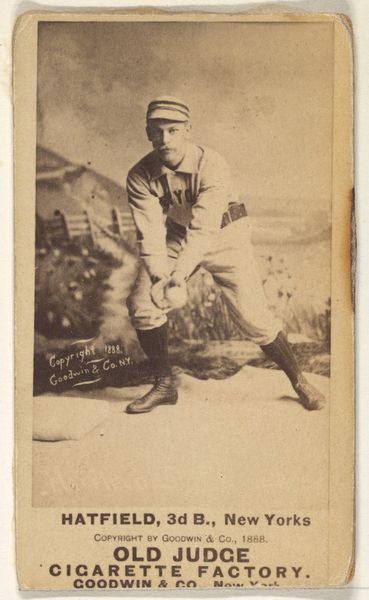
Shindle, 3rd Base, Baltimore Orioles, from the Old Judge series (N172) for Old Judge Cigarettes 1888
0:00
0:00
drawing, print, photography, albumen-print
#
portrait
#
drawing
# print
#
photography
#
19th century
#
men
#
genre-painting
#
athlete
#
watercolor
#
albumen-print
#
realism
Dimensions: sheet: 2 11/16 x 1 3/8 in. (6.9 x 3.5 cm)
Copyright: Public Domain
Curator: This intriguing little albumen print comes from an 1888 series called "Old Judge," produced by Goodwin & Company, cigarette manufacturers. It features Shindle, the third baseman for the Baltimore Orioles. What are your initial impressions? Editor: Stark and striking. The athlete looks almost stern. His posed, upward glance speaks volumes. It gives the feeling of the archetypal image of masculinity, of an established social class looking far into the future, like they are trying to keep and protect their place. Curator: Interesting take. Consider that these cards, found within cigarette packs, weren't high art, but served a promotional function. Their imagery certainly played into contemporary ideas of athleticism and perhaps national pride. The rise of baseball coincided with a need for strong masculine figures. Editor: Precisely! This piece normalizes baseball by way of circulating the subject, here, Shindle as a figure to be regarded and ultimately emulated, like how advertising in the same vein presents bodies and lifestyles today. Curator: Yes, and the circulation of these images was facilitated by the expanding print culture. Goodwin & Company sought to capitalize on baseball's popularity, inserting a bit of Americana into their products to boost sales and integrate into the cultural zeitgeist. Editor: But the image does something else for its target audience by giving a glimpse into the idealized turn-of-the-century white masculinity, as if beckoning the potential client to not just observe Shindle but also perform his position in relation to other members of that cultural landscape, thereby, further entrenching that specific demographic and it's politics within that period. Curator: Absolutely. This little print isn't just a snapshot of a baseball player; it’s a carefully constructed symbol, revealing the intertwining of sport, industry, and social ideologies during a pivotal moment in American history. It speaks of what and who was worthy of capturing, distributing, and remembering. Editor: Seeing the imagery now within today's contexts and intersectional dialogue surrounding media representation only allows this baseball card to represent the various positionalities that a modern consumer can bring to it as an art piece. What once only signified one moment, today marks all possible moments and the various social strata each of them encompass.
Comments
No comments
Be the first to comment and join the conversation on the ultimate creative platform.
